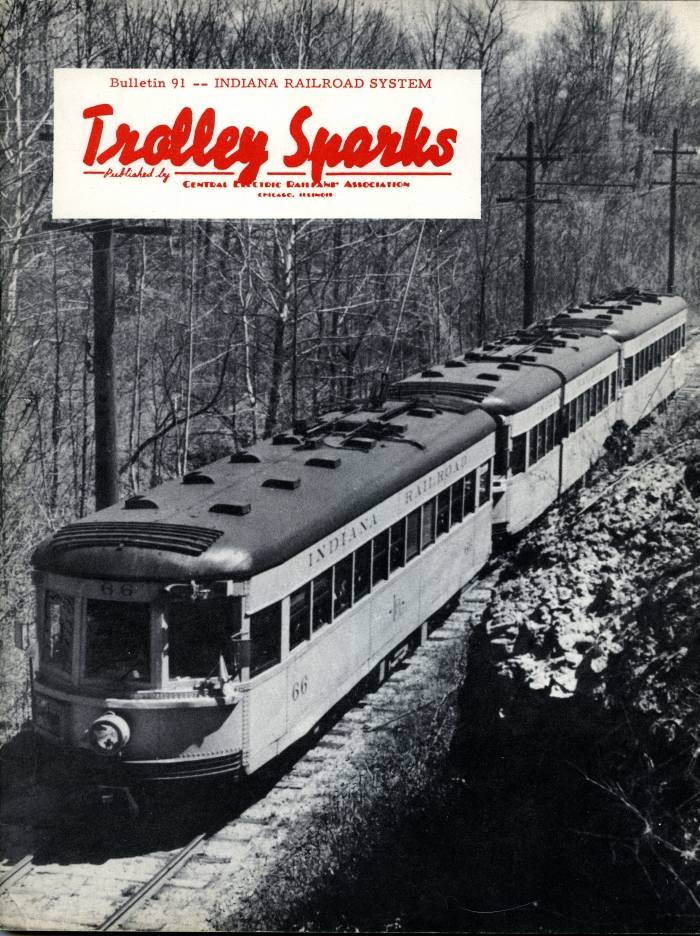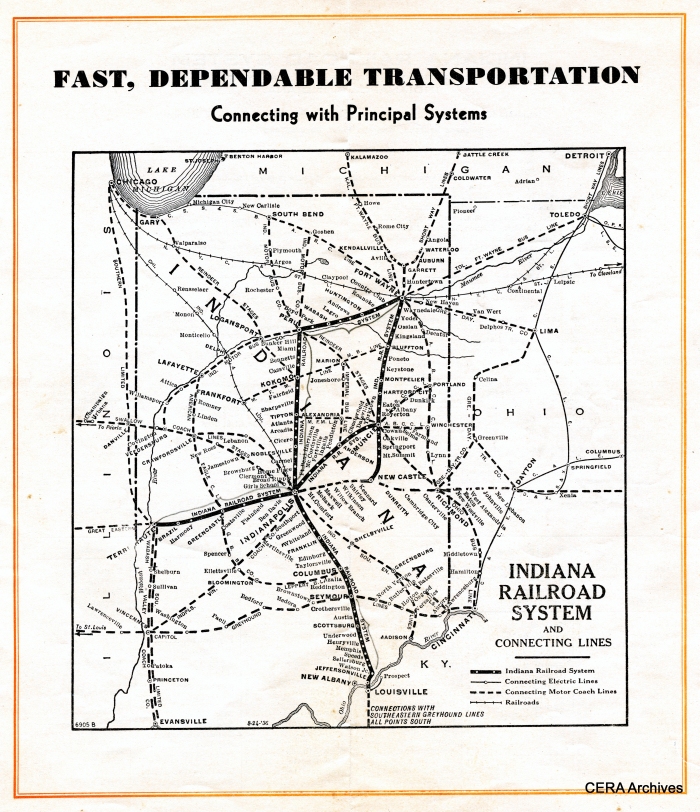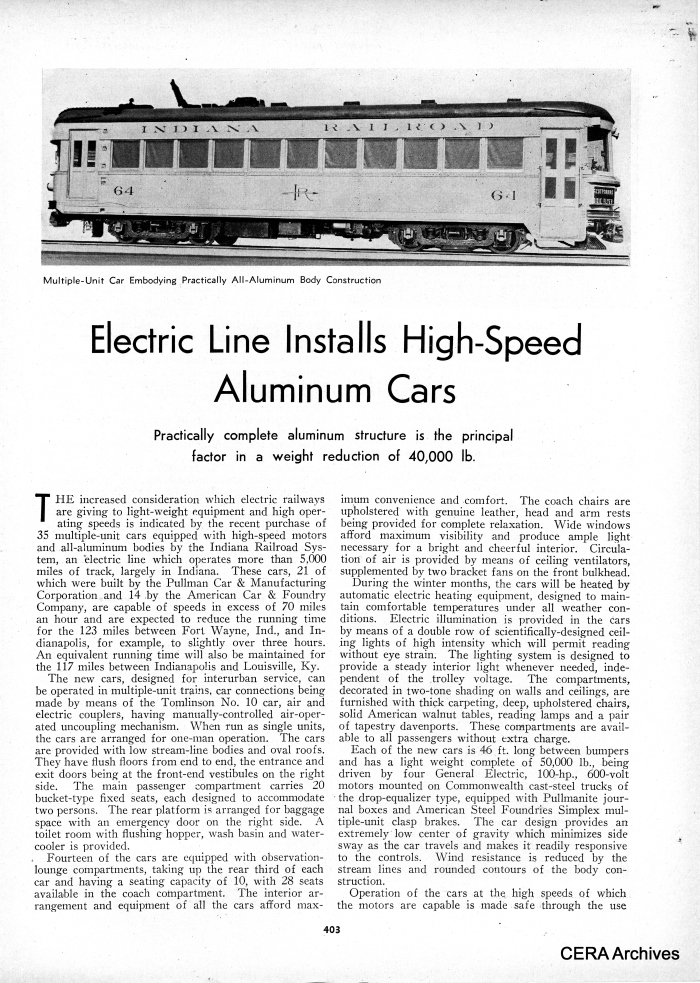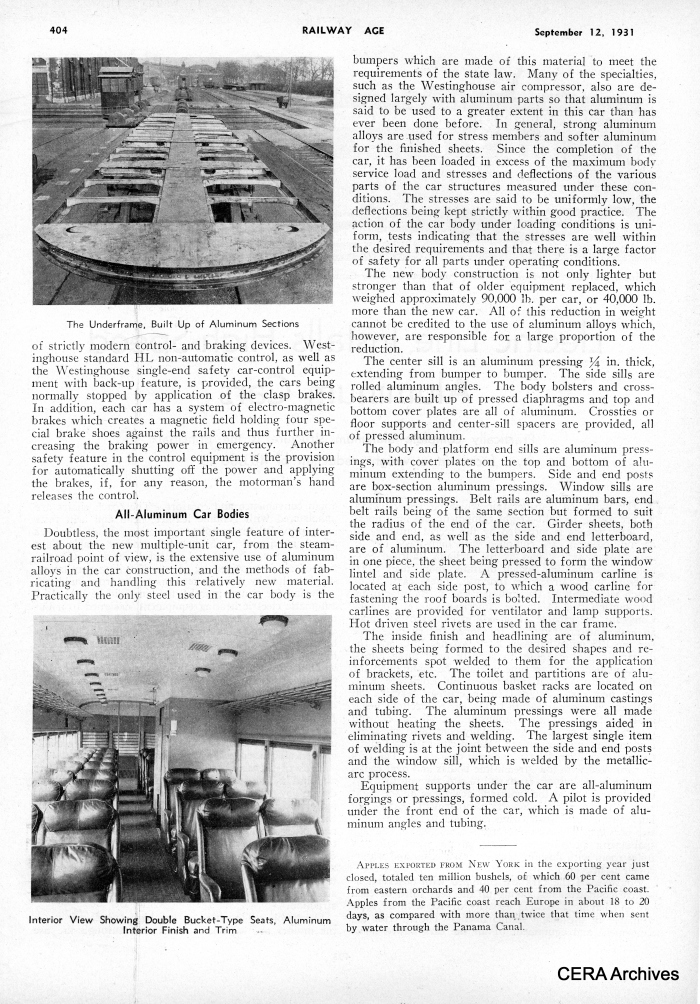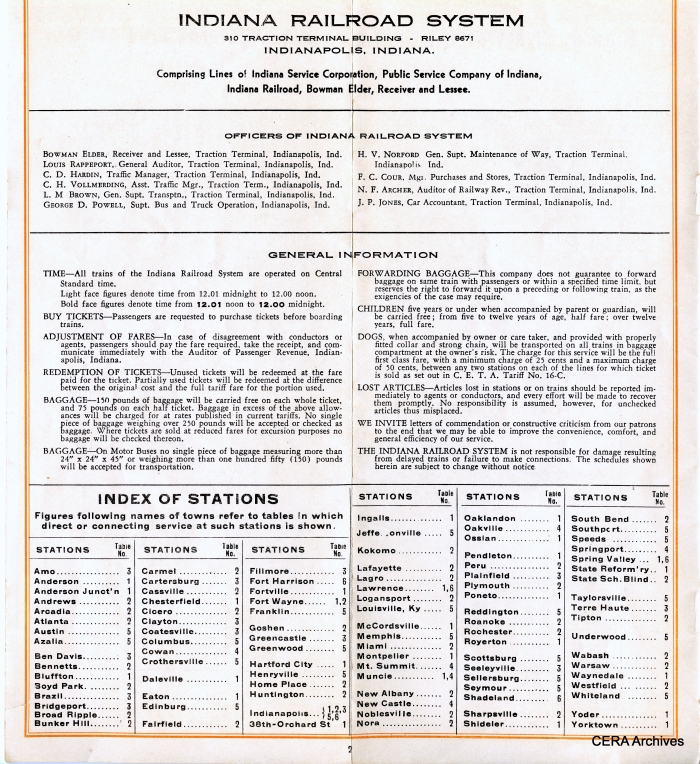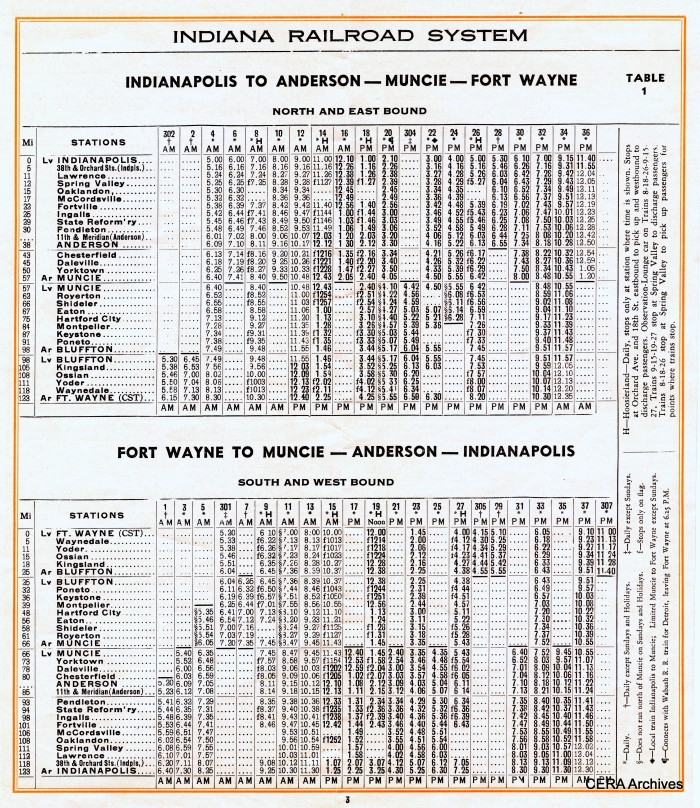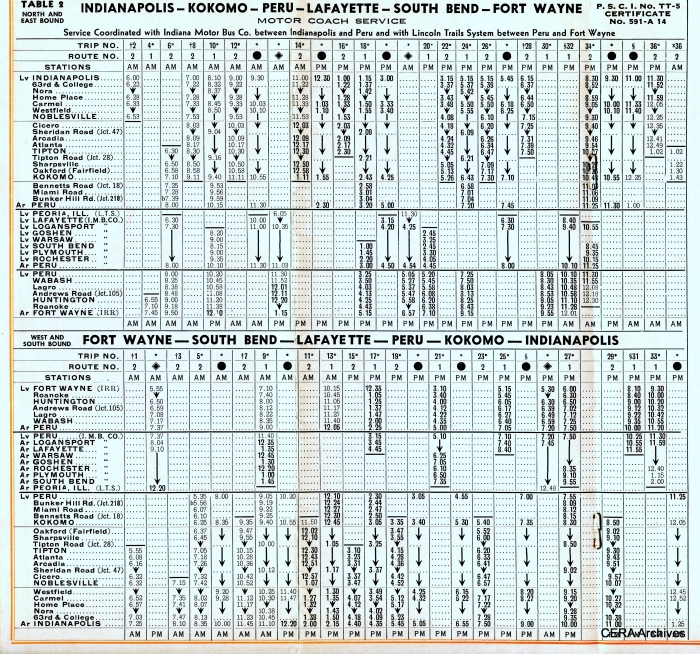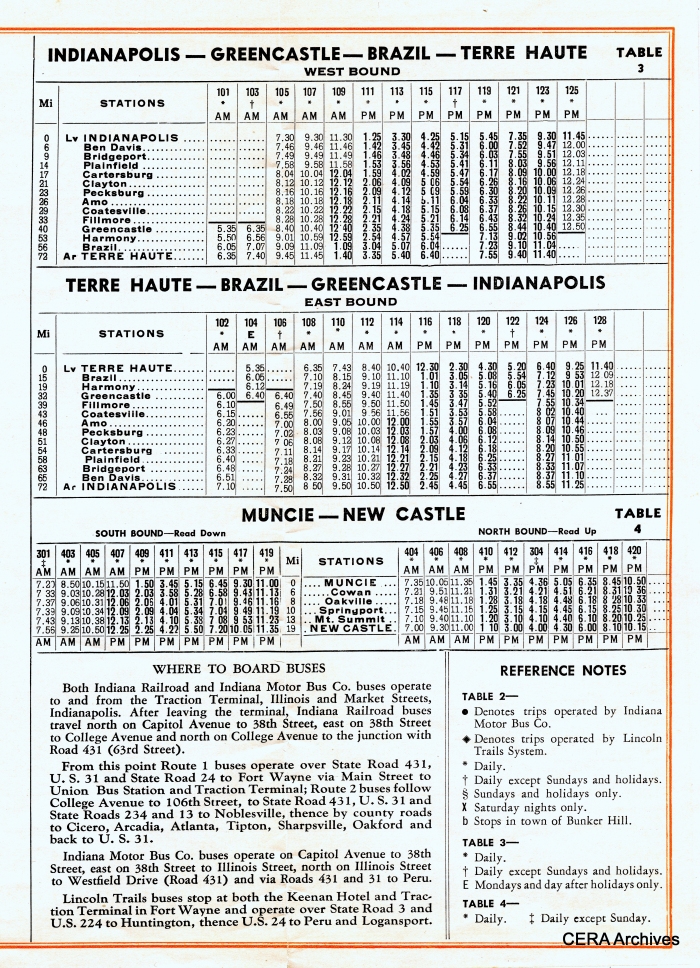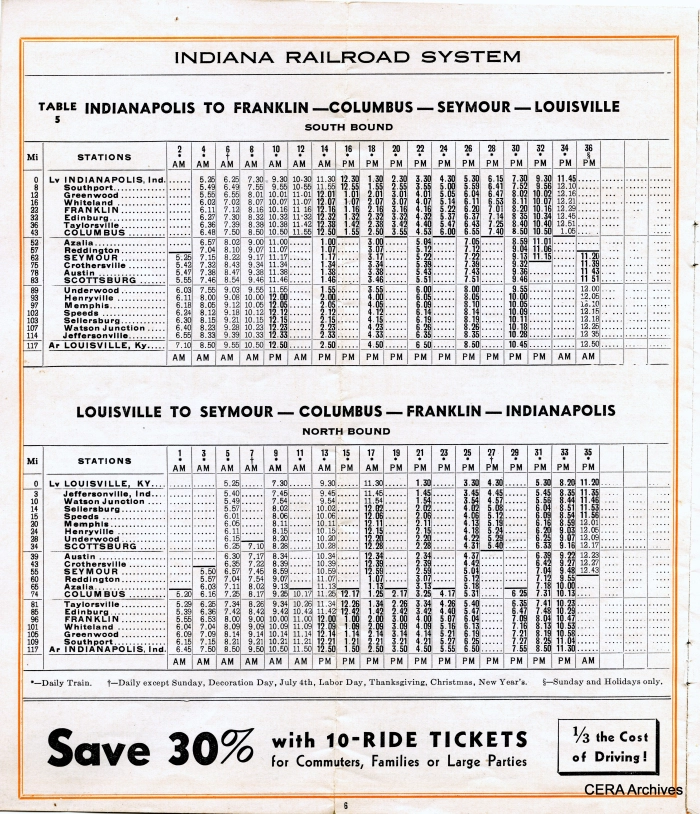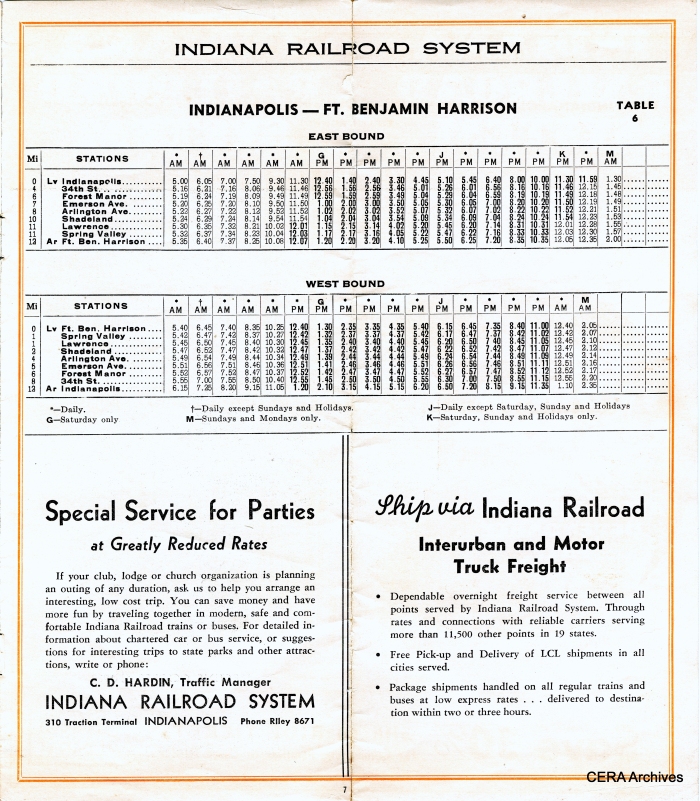Today we focus our attention on the Indiana Railroad, in the first of two posts. The Wikipedia entry on IRR sums it up pretty nicely:
The Indiana Railroad (IR) was the last of the typical Midwestern United States interurban lines. It was formed in 1930-31 by combining the operations of the five major interurban systems in central Indiana into one entity. The predecessor companies came under the control of Midland Utilities, owned by Samuel Insull. It was Insull’s plan to transform the Indiana interurban network into a new Indiana Railroad by modernizing the profitable routes and abandoning the unprofitable ones. With the onset of the Great Depression, the Insull empire collapsed and the Indiana Railroad was left with a decaying infrastructure and little hope for overcoming the growing competition of the automobile for passenger business and the truck for freight business. The IR faced bankruptcy in 1933, and receiver Bowman Elder was designated to run the company. Payments on bonded debt were suspended. Elder was able to keep the system virtually intact for four years, and IR operated about 600 miles (970 km) of interurban lines throughout Indiana during this period. During the late 1930s, the routes were abandoned one by one until a 1941 wreck with fatalities south of Indianapolis put an abrupt end to the last operation of interurbans in Indiana.
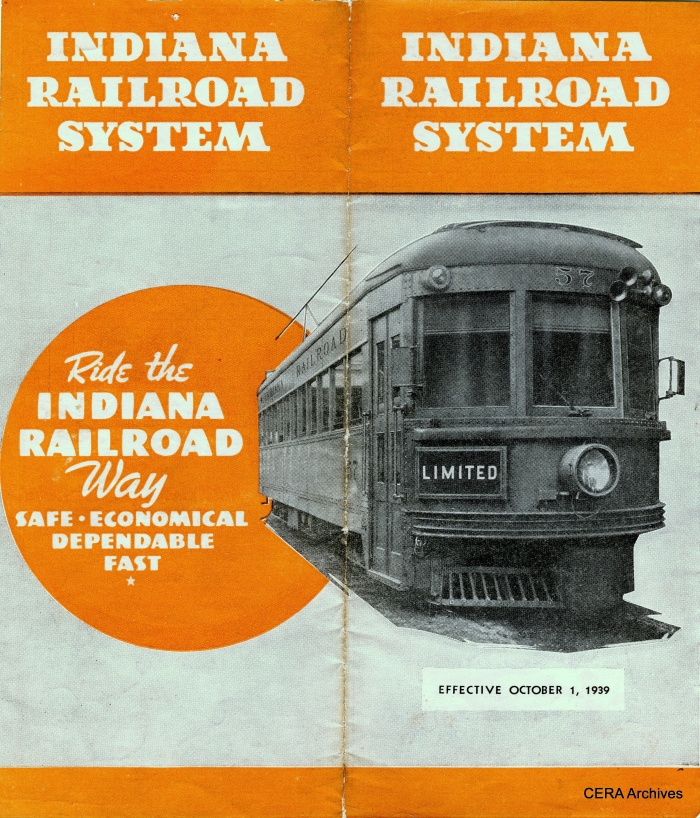
The early history of Central Electric Railfans’ Association is tied in with Indiana Railroad. The lateGeorge Krambles, CERA Member #1, worked for IR early in his career, and some of the first CERA fantrips were run on that fabled interurban prior to the final abandonment in 1941. A complete list of CERA fantrips appears in our recent publication Trolley Sparks Special #1.
Indiana Railroad was famous for its fleet of lightweight high-speed interurbans, cars 50-84, built by ACF and Pullman in 1931. These in turn were improved versions of similar cars built for the Cincinnati & Lake Erie shortly before. The IR cars, unlike the C&LE’s, could be operated in multiple units with up to three cars coupled at one time.
Unfortunately, only two of the 35 high-speeds were preserved. Car 55 went to Lehigh Valley Transit, where it was transformed into 1030, the so-called “Golden Calf” of the fleet. After LVT abandoned the Liberty Bell Limited interurban service in 1951, this car was purchased by the Seashore Trolley Museum, where it is today.
After the IR abandoned in 1941, car 65 was purchased by the Cedar Rapids and Iowa City (CRANDIC), where it ran until the end of passenger service on May 30, 1953. The fledgling Illinois Electric Railway Museum bought it, as its first piece of equipment. It remains at IRM today in operating condition.
Unfortunately, there were no takers for the remainder of the high-speeds. They sat in storage during most of 1941 waiting for buyers that never came, and were unceremoniously junked. Then, shortly thereafter, Pearl Harbor was bombed.
Street railways around the country carried record numbers of passengers during WWII, and there were any number of properties that could have benefited from the Indiana Railroad lightweight interurbans. In particular, they would have been a godsend to LVT, where they could have been used in MU service on the Liberty Bell Limited. Instead, LVT ran cars in multiple sections, resulting in fatal crashes that signaled the beginning of the end of that fabled line between Philadelphia and Allentown.
CERA featured the Indiana Railroad in Bulletin 91, first published in 1950. It was reprinted in a slightly revised and expanded form in 1975. A fuller book-length treatment arrived in 1991, in the form of Indiana Railroad- The Magic Interurban by George K. Bradley, CERA Bulletin 128. These bulletins are out of print, but can be found on the secondary market.
While you search for those, we hope you will enjoy the photos we are posting today, and those in the second part of our IR series, which will appear in a couple of days. We have included an article from the September 12, 1931 issue of Railway Age, profiling the then-new cars. Timetable information is reproduced from October 1, 1939, by which time the Hoosier interurban network was already being dismantled.
-David Sadowski
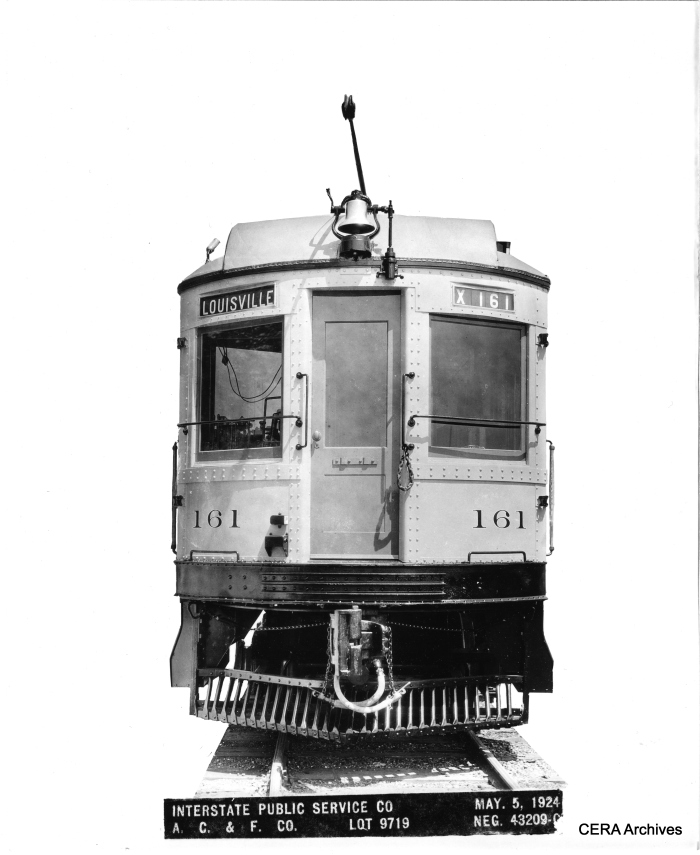
A builder’s photo of Interstate Public Service Co. car 161 from 1924. According to Don’s Rail Photos, “161 was built by American Car & Foundry in 1923 as a parlor-buffet. It was rebuilt as IRR 738 an express motor in 1937 and retired in 1941.” (Photographer unknown – CERA Archives)
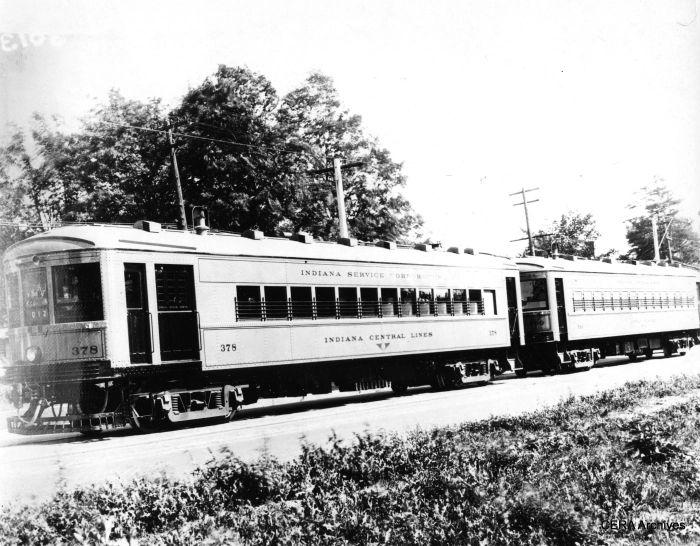
Indiana Service Corp. (one of the predecessor companies to Indiana Railroad) car 378 with parlor car 390 in Ft. Wayne on July 20, 1926. 378 was built in 1926 by St. Louis Car Co. (Photographer unknown – CERA Archives)

A line of cars headed up by Interstate Public Service car 263. Interstate was one of the predecessor companies to Indiana Railroad. According to Don’s Rail Photos, “263 was built by Kuhlman Car Co in 1927, #924. It became IRR 202 in 1930 and sold as Portland Traction Co 4001 in 1940. It was acquired by Northern California Trolley Museum in 1959 and Western Railway Museum in 1960. It was restored as IRR 202.” A note on the back of the photo says these cars were used in the Jeffersonville, Charlestown, and New Albany area. (Photographer unknown – CERA Archives)
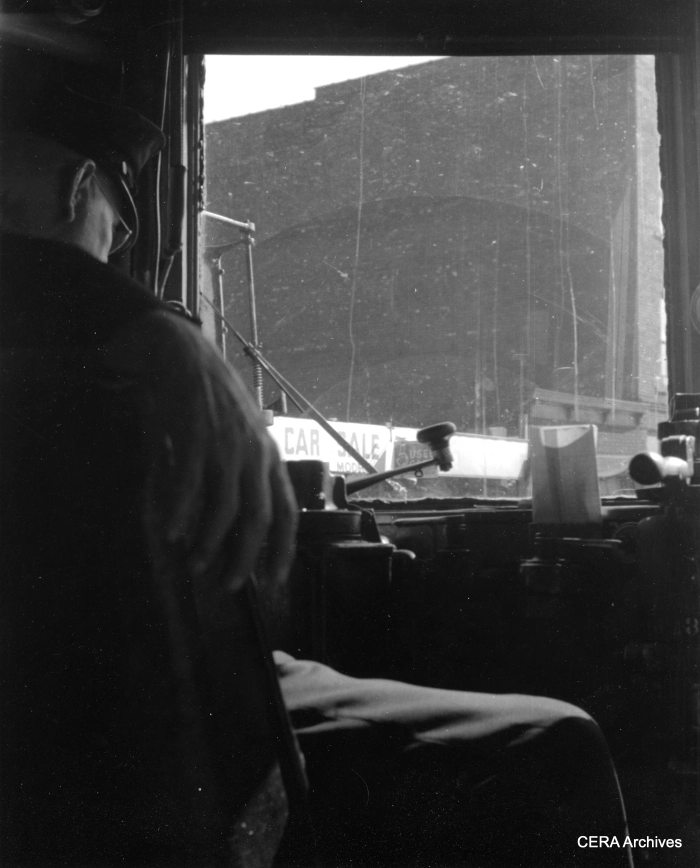
Motorman Claude Stephens at the helm of IR 65. (Photographer unknown – CERA Archives)
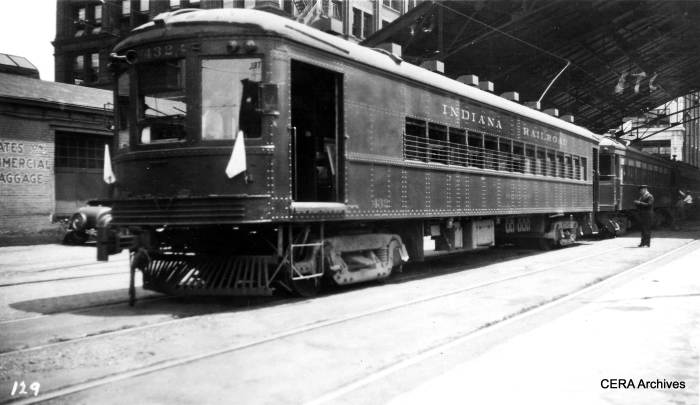
IR heavyweight interurban car 432 in the 1930s at the Indianapolis Traction Terminal. When built in 1904, it was the largest interurban station in the world, with lines radiated out in all directions. This car was built by St. Louis Car Co. in 1925. (Photographer unknown – CERA Archives)
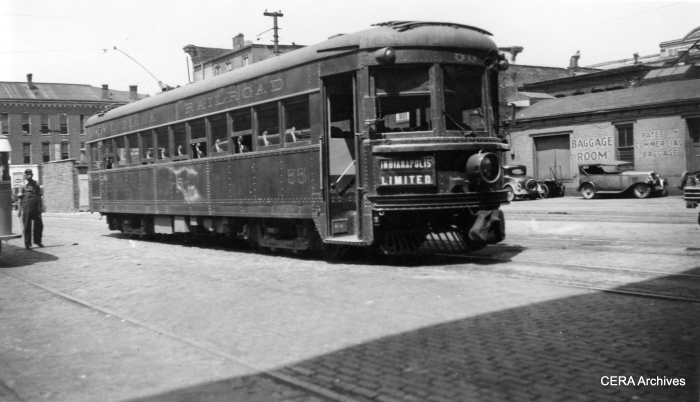
IR lightweight high-speed interurban car 55 at the Indianapolis Traction Terminal. This car was sold to Lehigh Valley Transit in 1941, where it was modified into car 1030, the pride of the LVT fleet. (Photographer unknown – CERA Archives)
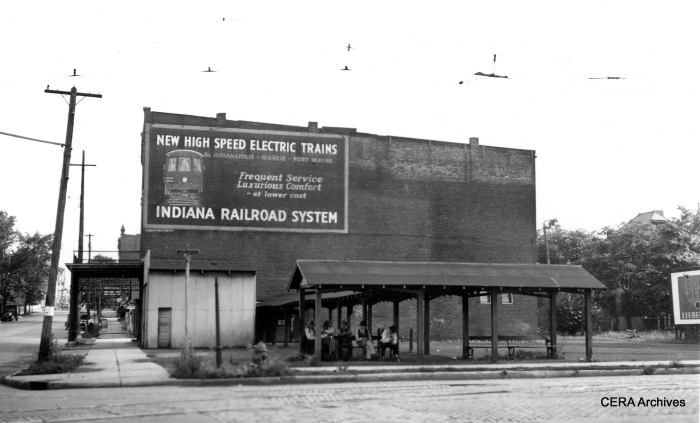
The passenger waiting area in Anderson. The line between Indianapolis and Anderson was the last segment of the once-great interurban to be abandoned in 1941, as the result of a fatal head-on crash. (Photographer unknown – CERA Archives)
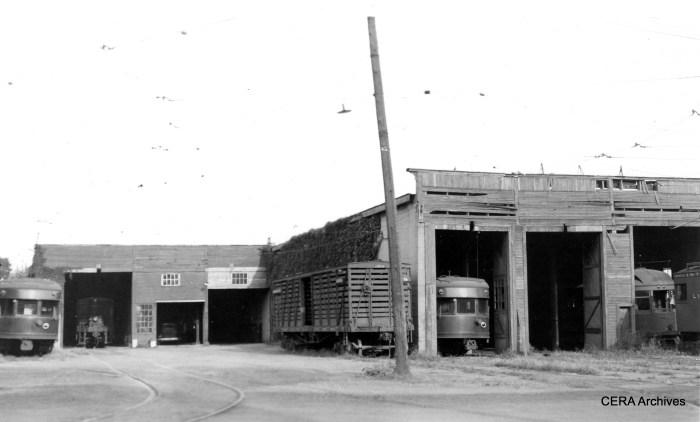
An IR car barn at an unidentified location. (Photographer unknown – CERA Archives)
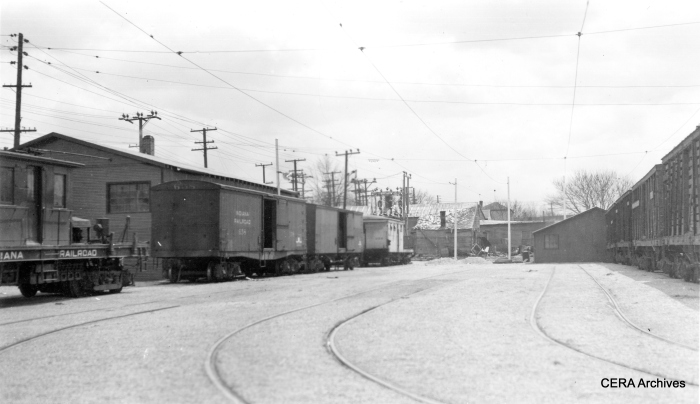
IR trolley freight operations at an unidentified location. (Photographer unknown – CERA Archives)

Indiana Railroad boxcar 576. (Photographer unknown – CERA Archives)
